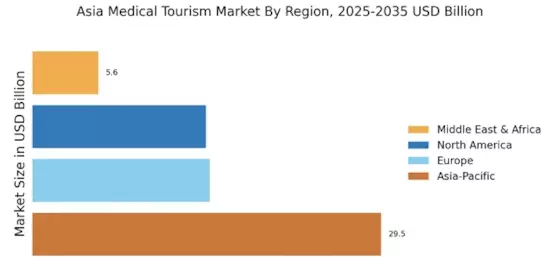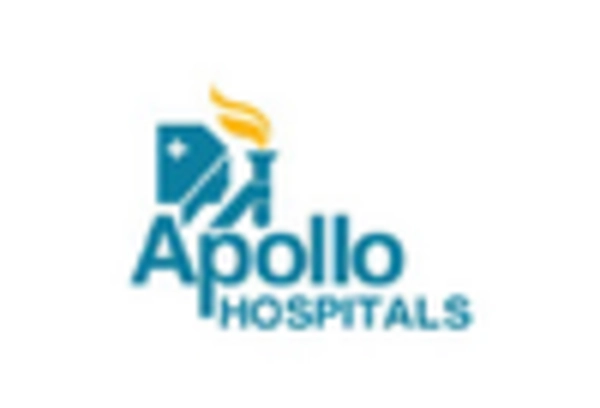Cultural and Recreational Appeal
The Asia Medical Tourism Market is also influenced by the cultural and recreational appeal of the region. Many patients combine their medical trips with leisure activities, taking advantage of the rich cultural heritage and natural beauty of countries like Thailand, India, and Indonesia. This dual-purpose travel enhances the overall experience for medical tourists, making the journey more attractive. The potential for recovery in a serene environment, coupled with the opportunity to explore new cultures, adds value to the medical tourism experience. As a result, the Asia Medical Tourism Market is likely to see continued growth as patients seek not only medical care but also enriching travel experiences.
Diverse Range of Medical Services
The Asia Medical Tourism Market offers a diverse range of medical services, catering to various health needs. From cosmetic surgery to complex cardiac procedures, patients can find specialized treatments tailored to their requirements. Countries like Malaysia and Thailand have developed niche markets in areas such as dental care and fertility treatments, attracting patients from around the world. The variety of services available allows patients to choose destinations based on their specific medical needs, which is a significant driver for the industry. As the Asia Medical Tourism Market evolves, the expansion of service offerings continues to attract a broader demographic of medical tourists.
Government Support and Initiatives
Government support and initiatives play a crucial role in the growth of the Asia Medical Tourism Market. Many Asian governments actively promote their countries as medical tourism destinations through various campaigns and incentives. For example, initiatives to streamline visa processes for medical tourists and investments in healthcare infrastructure are common. Additionally, partnerships between government bodies and private healthcare providers enhance the visibility and accessibility of medical services. As of 2025, several countries in Asia have reported increases in medical tourist arrivals due to these supportive measures. This proactive approach by governments is likely to further bolster the Asia Medical Tourism Market in the coming years.
Cost-Effectiveness of Medical Procedures
The Asia Medical Tourism Market is characterized by the cost-effectiveness of medical procedures compared to many Western countries. Patients often find that they can receive high-quality healthcare services at a fraction of the cost. For instance, countries like India and Thailand offer surgeries and treatments that can be 50-70% cheaper than in the United States or Europe. This financial incentive attracts a significant number of international patients seeking affordable healthcare solutions. The affordability factor is further enhanced by the favorable exchange rates in many Asian countries, making it an appealing option for those from developed nations. As a result, the Asia Medical Tourism Market continues to grow, driven by patients looking for quality care without the exorbitant price tag.
Availability of Advanced Medical Technology
The Asia Medical Tourism Market benefits from the availability of advanced medical technology and facilities. Countries such as Singapore and South Korea are recognized for their state-of-the-art healthcare infrastructure, which includes cutting-edge diagnostic tools and treatment options. The presence of internationally accredited hospitals ensures that patients receive care that meets global standards. In fact, as of 2025, it is estimated that over 30% of hospitals in Asia are accredited by international bodies, enhancing their appeal to medical tourists. This technological edge not only improves patient outcomes but also instills confidence in international patients, thereby propelling the growth of the Asia Medical Tourism Market.


















Leave a Comment